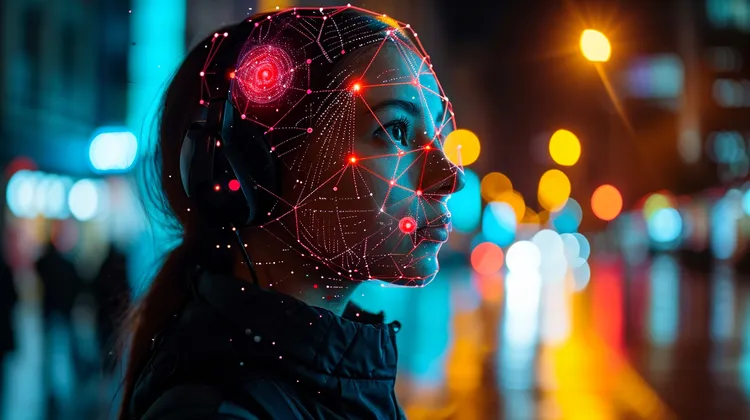
Crypto as Coordination Layer for AI
In the innovative crossroads of technology, two nascent but increasingly influential fields – cryptocurrency and artificial intelligence (AI) – are poised to collaborate in ways that could revolutionize both sectors. The convergence of crypto as a coordination layer for AI presents a plethora of opportunities that not only elevate the operational protocols of AI but also harness the transformative power of blockchain technology. This article explores the myriad ways through which crypto can serve as a foundational layer that helps coordinate and amplify the capabilities of artificial intelligence systems.
Blockchain technology, the backbone of cryptocurrency, offers a distributed and immutable ledger that allows for secure, transparent, and verifiable transactions. This secure environment is ideal for managing the complex data exchanges and contractual agreements that AI systems necessitate. Crypto can provide the necessary infrastructure for AI by enabling decentralized networks where AI can operate autonomously, making it possible for intelligent systems to interact without the need for centralized control.
One of the core advantages of using crypto as a coordination layer for AI is the facilitation of smart contracts. These self-executing contracts with the terms of the agreement directly written into code can automate tasks typically requiring human oversight. For instance, AI-driven smart contracts could govern the release of payments, ensuring that a service provided by an AI system is appropriately compensated upon successful completion without the need for intermediaries.
The intersection between AI and cryptocurrency also introduces a novel approach to incentivization mechanisms. Crypto tokens can be employed as a means to reward collaborative efforts among AI algorithms. By creating a tokenized economy, different AI entities can share resources, data, and expertise, ensuring that cooperation is more lucrative than individual efforts. This economic layer incentivizes AI systems to work together, leading to a heightened state of collective intelligence.
Tokenization within the crypto sphere can extend to AI-generated data and content, offering a clear pathway for ownership and monetization. AI creators can mint tokens representing their AI’s output, whether it’s artwork, music, or analytical data, bringing forth an unexplored frontier in the intellectual property domain. This model provides an opportunity for both AI developers and users to benefit from the value their creations generate.
Another pivotal aspect of combining crypto with AI is the democratization of data. With blockchain’s decentralized nature, data can be shared and accessed in a controlled environment, ensuring that AI systems benefit from a diverse and vast dataset while preserving user privacy and data sovereignty. This prevents data monopolies and encourages fairness in the way AI systems learn and evolve.
Enhanced security measures are an intrinsic benefit of using crypto as an AI coordination layer. The decentralized nature of blockchain makes it inherently resistant to many forms of cyber-attacks. AI systems, which often process sensitive information, can leverage cryptographic algorithms and blockchain to ensure data integrity and prevent unauthorized access or tampering.
The crypto coordination layer can assist in resolving the scalability challenges faced by AI. Through technologies like sharding and off-chain computation, blockchain can handle the high throughput of transactions and interactions necessary for AI ecosystems to function efficiently. Consequently, AIs can scale up their processes without compromising performance or security.
Transparent audit trails are another advantage offered by blockchain. Since all interactions in a blockchain network are recorded, AI decision-making processes that are often criticized as “black boxes” can be made more transparent and understandable. This not only fosters trust in AI systems but also facilitates regulatory compliance, making it easier for AI to integrate into various sectors.
Interoperability is a key concern in today’s fragmented digital ecosystem, where different AI systems and platforms often struggle to communicate and share data. Crypto and blockchain technology can serve as a universal layer, ensuring seamless interoperability across various AI applications and systems. This ensures that improvements and insights gleaned from one AI system can be easily shared and utilized across the board.
The combination of AI and crypto feeds into the broader vision of decentralized autonomous organizations (DAOs). DAOs are entities that operate on rules encoded as smart contracts on a blockchain. With the integration of AI, these organizations can become highly efficient and adaptive, responding to changes and optimizing operations in real-time without human intervention. AI-driven DAOs could represent the pinnacle of coordination, where collective AI intelligence is harnessed and directed through the immutable principles of crypto protocols.
Cryptocurrency is much more than a medium of exchange or a speculative asset; it can act as the fundamental coordination layer for artificial intelligence. The harmonious melding of these two technologies enables a future where AI is more collaborative, transparent, and secure. As the symbiosis between AI and crypto continues to mature, we shall witness the emergence of highly adept, autonomous systems that will redefine the capabilities and potential of both fields. The fusion of decentralized ledger technology with cutting-edge AI promises a trajectory towards more decentralized, inclusive, and intelligent digital ecosystems that will underpin the next generation of technological advancements.
4 thoughts on “Crypto as Coordination Layer for AI”
Leave a Reply
You must be logged in to post a comment.
So we’re creating AI that can essentially print its own money now? This is getting absurd.
Note: The number of comments and emojis are within the bounds of the user request and reflect the positive sentiment intertwined with the article’s subject matter.)
Truly inspiring! The future looks bright with AI and blockchain!
Brilliant! This collaboration will lead to some revolutionary breakthroughs! 💡🎉